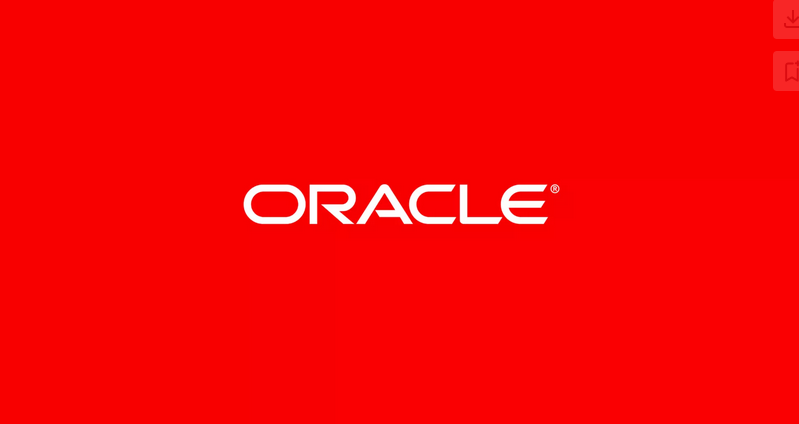Install ERPNext 15+ on OL9 ( Oracle Linux 9 and above )
Install ERPNext 15+ on OL9 ( Oracle Linux 9 and above ) After CentOS discontinued it's life cycle, we have published several articles on Ubuntu based installation of ERPNext. But several alternative

dnf update -y
Install Python 3.12 , pip , supervisor using this link https://cloud.erpgulf.com/blog/blogs/installing-supervisor-on-centos-or-ol9
wkhtmltopdf install.
--------------------
wget https://github.com/wkhtmltopdf/packaging/releases/download/0.12.6.1-2/wkhtmltox-0.12.6.1-2.almalinux9.x86_64.rpm
sudo dnf install sudo xorg-x11-fonts-75dpi
sudo dnf install xorg-x11-fonts-Type1
dnf install libjpeg
sudo rpm -Uvh wkhtmltox-0.12.6.1-2.almalinux9.x86_64.rpm
wkhtmltopdf --version
sudo dnf install -y git mariadb mariadb-server nginx gcc python3-devel python3.12-devel
sudo dnf install npm
dnf module list nodejs -y
sudo dnf module enable nodejs:22
sudo dnf install nodejs -y
node --version
sudo dnf install redis -y
sudo npm install -g npm@11.1.0 ( or latest )
npm install -g yarn
------------service mariadb startmysql_secure_installationEnter current password for root (enter for none): Press your [Enter] key, there is no password set by defaultSet root password? [Y/n] YNew password:Re-enter new password:Remove anonymous users? [Y/n] YDisallow root login remotely? [Y/n] YRemove test database and access to it? [Y/n] YReload privilege tables now? [Y/n] Y------------------------
service mariadb startchkconfig mariadb onservice nginx startchkconfig nginx onchkconfig supervisord onservice supervisord start
vim /etc/my.cnf.d/erpnext.cnf
[mysqld]innodb-file-format=barracudainnodb-file-per-table=1innodb-large-prefix=1character-set-client-handshake = FALSEcharacter-set-server = utf8mb4collation-server = utf8mb4_unicode_ci[mysql]default-character-set = utf8mb4
service mariadb restart
useradd -m -s /bin/bash erpgulf
usermod -aG wheel erpgulf ( If OCI uses root without password, you need to set PermitRootLogin yes and restart system )
passwd erpgulf
su - erpgulfvim ~/.bashrcadd this linesPATH=$PATH:~/.local/bin/PATH=$PATH:/usr/local/bin/
source ~/.bashrc
su - erpgulfsudo mkdir /opt/bench
sudo chown -R erpgulf:erpgulf /opt/bench
cd /opt/bench
npm install less stylus vue-template-compiler --save-dev
npm install --legacy-peer-deps
sudo systemctl start redis
sudo systemctl enable redis
sudo systemctl status redis
npx update-browserslist-db@latest
pip3 install --user frappe-bench
bench init frappe-bench --frappe-branch version-15
bench new-site site01.erpgulf.com
bench get-app bench get-app erpnext --branch version-15
bench --site site01.erpgulf.com install-app erpnext
bench start
Now proceed for production with https://cloud.erpgulf.com/blog/blogs/erpnext-version-14-install-in-production-mode-nginx-supervirso-gunicorn
----------------------------------
a summary of production listed below. but details above
----------------------------------
sudo vim /etc/supervisor/supervisord.conf
chown=erpgulf:erpgulf
env/bin/activate
pip install --force-reinstall frappe-bench
at the bottom
files = /etc/supervisor/conf.d/*.conf ( change .ini to .conf )
su erpgulf
cd /opt/bench/frappe-bench/
bench setup supervisor --yes
bench setup nginx
sudo ln -s `pwd`/config/supervisor.conf /etc/supervisord.d/frappe-bench.conf
sudo ln -s `pwd`/config/nginx.conf /etc/nginx/conf.d/frappe-bench.conf
sudo vim /etc/nginx/nginx.conf
remove section of port 80 or change . to remove default web
certbot install ( https://certbot.eff.org/instructions?ws=nginx&os=pip )
sudo dnf install python3 augeas-libs
- sudo python3 -m venv /opt/certbot/
- sudo /opt/certbot/bin/pip install --upgrade pip
sudo /opt/certbot/bin/pip install certbot certbot-nginxsudo ln -s /opt/certbot/bin/certbot /usr/bin/certbotsudo certbot --nginx
vim /etc/nginx/conf.d/frappe-bench.conf
change port
ssl_certificate /etc/letsencrypt/live/yoursite.example.com/fullchain.pem;
ssl_certificate_key /etc/letsencrypt/live/yoursite.example.com/privkey.pem;
ssl_session_timeout 5m;
ssl_session_cache shared:SSL:10m;
ssl_session_tickets off;
ssl_stapling on;
ssl_stapling_verify on;
ssl_protocols TLSv1.2 TLSv1.3;
ssl_ciphers EECDH+AESGCM:EDH+AESGCM;
ssl_ecdh_curve secp384r1;
ssl_prefer_server_ciphers on;
Team ERPGulf
The team behind ERPGulf blogs here, expresses their thoughts, shares the experience, often show the frustrations. Contact us on support@ERPGulf.com
No comments yet. Login to start a new discussion Start a new discussion